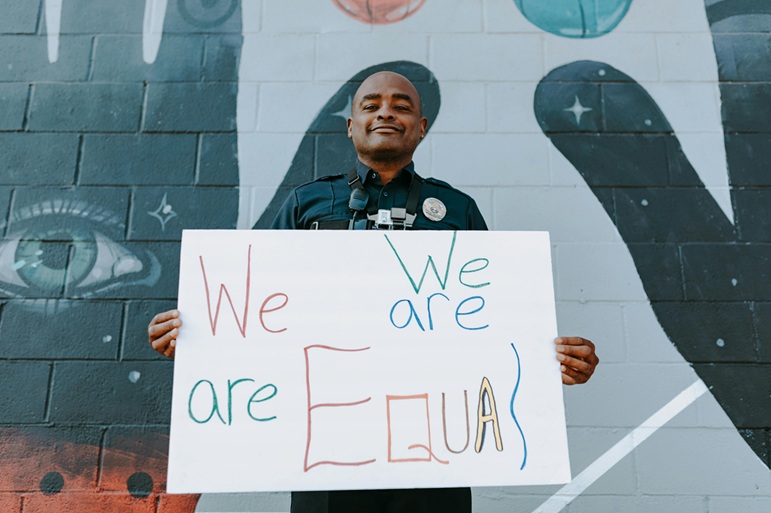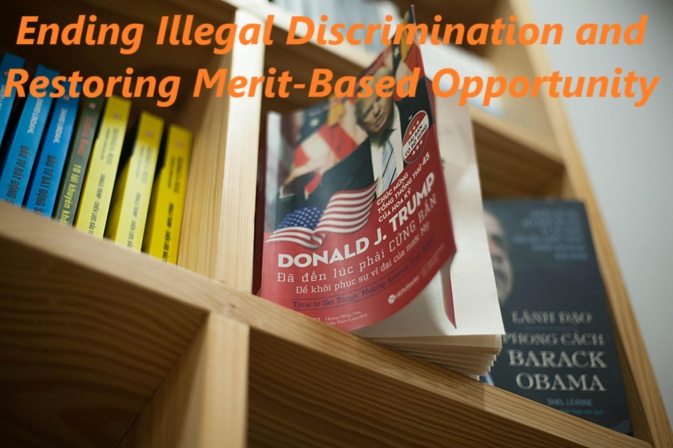DEI Programs
Introduction
In a decisive move to restore fairness and equality in the United States, President Donald Trump, in his recent term, issued an executive order to end illegal discrimination and reaffirm the importance of a merit-based approach to opportunities. Grounded in the enduring principles of the Civil Rights Act of 1964, this order directly addresses concerns over race- and sex-based preferences that have proliferated under Diversity, Equity, and Inclusion (DEI) and Diversity, Equity, Inclusion, and Accessibility (DEIA) initiatives. This article delves into the essence of the order, its implications, and how it seeks to reshape the nation’s approach to civil rights and meritocracy.

Upholding the Foundations of Civil Rights
The United States has long been guided by civil rights laws that protect individuals from discrimination based on race, color, religion, sex, or national origin. These principles, enshrined in the Civil Rights Act of 1964, are fundamental to the nation’s identity. President Trump’s executive order reinforces these principles, emphasizing that identity-based preferences promoted under DEI and DEIA initiatives undermine equality and fairness.
The President’s order criticizes these initiatives for prioritizing identity over merit, arguing that they have deviated from their original intent. Instead of fostering inclusivity, these policies have fostered division and created an “identity-based spoils system” that contradicts the traditional American values of hard work, individual excellence, and equal opportunity.
Addressing the Consequences of Illegal Preferences
A core concern of the executive order is the detrimental impact of illegal preferences on both individuals and society at large. The order underscores how identity-based policies have replaced merit, aptitude, and hard work in key sectors like healthcare, law enforcement, aviation, and education. By prioritizing identity over competence, the nation risks inefficiency, loss of trust, and, in extreme cases, endangering lives.
The order also highlights the stigmatization of hardworking individuals who are excluded from opportunities due to race or sex. This unfairness erodes public trust and diminishes the spirit of the American Dream—a belief that anyone, regardless of their background, should have the opportunity to succeed based on merit and determination.
Key Actions to Combat Discrimination
President Trump’s executive order outlines a series of steps to dismantle illegal preferences and restore a merit-based system:
Revocation of Previous Executive Actions
The order repeals several executive orders and memorandums that embedded DEI principles into federal operations, such as Executive Orders 12898, 13583, and 13672. By doing so, the administration seeks to realign federal practices with civil rights laws and eliminate systemic biases.
Reforming Federal Contracting Practices
The order introduces reforms to federal contracting processes, requiring contractors to adhere strictly to anti-discrimination laws. Federal contractors are no longer obligated to take affirmative action or engage in workforce balancing based on race, sex, or other identity factors. These changes aim to streamline processes, enhance efficiency, and reduce costs while upholding merit-based standards.
Removing DEI Language from Federal Guidance
Federal agencies are directed to review and revise policies to eliminate references to DEI and DEIA principles. This includes terminating mandates related to “equity” or “equitable decision-making” that conflict with anti-discrimination laws.
Private Sector Accountability
The executive order encourages the private sector to abandon illegal DEI practices and adopt policies that promote meritocracy. Agencies, in collaboration with the Attorney General, are tasked with identifying sectors and organizations that engage in illegal preferences and ensuring compliance through investigations, litigation, and regulatory measures.

Implications for the Private Sector
The order sends a clear message to the private sector: illegal preferences and identity-based policies are incompatible with federal civil rights laws. By emphasizing merit-based hiring and promotion practices, the administration aims to foster fairness, increase productivity, and encourage innovation across industries.
Critics of this approach argue that dismantling DEI programs could hinder progress toward addressing systemic inequalities. Proponents, however, maintain that focusing on merit and individual achievement is the most effective way to ensure fairness and opportunity for all. The debate reflects a broader societal question: how to balance inclusivity with the principles of meritocracy.
Education as a Catalyst for Change
Educational institutions are at the heart of shaping future generations and promoting social mobility. The order directs the Department of Education to issue clear guidance to schools and colleges, ensuring compliance with federal civil rights laws. This includes addressing the implications of the Supreme Court’s decision in Students for Fair Admissions v. Harvard, which reaffirmed the importance of merit-based admissions.
By eliminating illegal preferences in education, the administration seeks to ensure that students are evaluated based on their abilities, achievements, and potential, rather than identity. This move aims to restore faith in the education system and provide equal opportunities for all students, regardless of their background.
Strengthening Enforcement and Accountability
A significant aspect of the executive order is its emphasis on enforcement. Federal agencies are required to include anti-discrimination clauses in all contracts and grants, ensuring recipients comply with civil rights laws. Additionally, the Attorney General is tasked with developing a strategic plan to address illegal DEI practices, including identifying high-profile cases for investigation and litigation.
These measures are designed to hold organizations accountable and reaffirm the administration’s commitment to protecting the civil rights of all Americans.
Challenges and Criticisms
While the order aims to restore fairness and meritocracy, it has faced criticism from advocates of diversity and inclusion initiatives. Critics argue that dismantling DEI programs may disproportionately impact underrepresented groups and fail to address historical inequities. They contend that DEI initiatives are necessary to create a more inclusive society and ensure equitable representation in workplaces and educational institutions.
Supporters of the order, however, argue that identity-based preferences undermine fairness and erode trust in institutions. They believe that merit-based policies are the most effective way to promote excellence and ensure equal opportunities for all individuals.
A Vision for a Fairer Future
President Trump’s executive order represents a bold step toward reaffirming the principles of equality, fairness, and meritocracy. By eliminating illegal preferences and promoting individual achievement, the order seeks to create a society where everyone has an equal shot at success, regardless of their background.
This vision aligns with the core values of the American Dream, fostering unity and encouraging excellence. While the path forward may be complex, the commitment to fairness and merit-based opportunity offers a foundation for building a stronger, more equitable society.
Conclusion
President Trump’s executive order marks a turning point in the nation’s approach to civil rights and meritocracy. By addressing illegal preferences and reaffirming the importance of individual achievement, the administration seeks to create a level playing field for all Americans.
While the order has sparked debates and challenges, it represents an opportunity to realign national policies with the principles of fairness, excellence, and equality. As the nation moves forward, the focus on merit and hard work will serve as a guiding light, ensuring that every individual has the opportunity to thrive and contribute to society.
Disclaimer:
This blog is a unique analysis based on President Trump’s executive order. It is intended for informational purposes only and does not represent an official government statement. Readers are encouraged to refer to the original text for specific details and legal interpretations.


Recent Comments